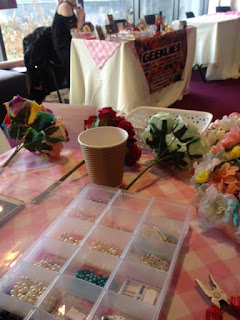As a second year events management student it is part of our
course to create a live event. It was important for all students to focus on
the marketing side of the event planning and make sure the consumer experience was
as experiential and unforgettable as possible.
I attended the arts and craft fair held in floor 5 of
Huddersfield Student’s Union by fellow students on my course. I found that the
event was good in making all attendees feel valued. The event was free of
charge and had the concept of allowing consumers to buy goods from other
students, whilst joining in with activities.
 |
| Consumers enjoying the origami experience |
During the event, there was a main touch point that I was
very impressed with. The first was the communication with the consumer from
beginning to the end of the event. When walking up to one of the stalls one of
the members of the team would come up to you, explain what the event was about,
who they were raising money for and what activities were available. Consumers
were able to fully engage in origami whilst drinking tea/coffee and snacking on
biscuits. Touches like these really help a consumer feel comfortable and
relaxed; which can be seen on their faces. This was especially useful as floor
5 had an open space where other students frequently visit; therefore meaning
that if they saw others enjoying themselves, they might want to participate in
the event experience.
The pre-event experience included the use of social media.
Those with stalls also helped promote the event; bringing in a larger audience.
From pre-event to the closure, I feel that the consumer was always put first,
as they were checked up on regularly and were also thanked when they left. Throughout
the whole event process, it was clear that the group were continuously updating
their Facebook page, in order to make sure that people were aware of their event,
where it was, the time it was held and also where to sign up, if they wanted a
stall.
 |
| Two of the stalls and the type of goods sold |
I feel that for this particular event, the event managers
were completely in control of the experience. The event managers chose which
stalls were suitable for students and also chose their own activities, making
sure that they knew exactly what they were doing and what exactly they were
giving to their attendees. However, it is possible that the outcome could not
as been as great as it was, due to the event not being ticketed; therefore meaning
that it could not be guaranteed how many students would turn up. This could
have caused difficulty and affected the event experience, as it may not have
had the exact same ambience or atmosphere.
Overall, I think the event was very successful and gave every
attendee the same friendly experience.




